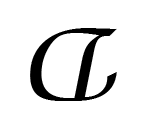March 26, 2013
LONG CAPITALISM
A concerning trend is whether our leaders actually believe in capitalism at all anymore. Here is a recent speech from Ben Bernanke (it’s pretty boring so prepare yourself appropriately with stimulants whatever their origins):
Today most advanced industrial economies remain, to varying extents, in the grip of slow recoveries from the Great Recession. With inflation generally contained, central banks in these countries are providing accommodative monetary policies to support growth. Do these policies constitute competitive devaluations? To the contrary, because monetary policy is accommodative in the great majority of advanced industrial economies, one would not expect large and persistent changes in the configuration of exchange rates among these countries. The benefits of monetary accommodation in the advanced economies are not created in any significant way by changes in exchange rates; they come instead from the support for domestic aggregate demand in each country or region. Moreover, because stronger growth in each economy confers beneficial spillovers to trading partners, these policies are not “beggar-thy-neighbor” but rather are positive-sum, “enrich-thy-neighbor” actions.
Did you notice it? That speech was less than 1% capitalistic. Shocking, I know, but it’s not a new trend.
Here is an excerpt from President Bush’s September 2008 speech on the financial crisis:
Financial assets related to home mortgages have lost value during the house decline, and the banks holding these assets have restricted credit. As a result, our entire economy is in danger.
So I propose that the federal government reduce the risk posed by these troubled assets and supply urgently needed money so banks and other financial institutions can avoid collapse and resume lending.
This rescue effort is not aimed at preserving any individual company or industry. It is aimed at preserving America’s overall economy.
Bush does a little better but is still less than 1.5% capitalistic. It’s less capitalistic than this communist scrawl:
Ðикита Сергеевич Хрущёв
We can find few if any world leaders who resemble true capitalists. Most only deploy capitalism when it’s mandated by structure, like right after things have hit a full stop, or in situations wherein to not do so would be an embarrassing faux pas, like in America.
Recommendation: It’s time to return capitalism to its roots. It’s time to shuck off the tyranny of lower-case letters and embrace capitalism in its purest form. THE TIME IS NOW. IF WE CAN START BELIEVING IN CAPITALISM AGAIN, WE WILL GET THIS COUNTRY (AND THE WORLD IT CONTROLS/OWNS/EXPLOITS/”TRADES WITH”) GOING IN THE RIGHT DIRECTION. ASK YOURSELF: AM I A CAPITALIST? IF THE ANSWER IS “YES,” THE ONUS IS ON YOU TO PROVE IT BY YOUR ACTIONS AND YOUR WORDS. LONG CAPITALISM.
 Tinderbox Capital LLC, an incendiary investment management firm and subsidiary of Long or Short Capital LLC, announces its third fund, Diversifying Fund I.
Tinderbox Capital LLC, an incendiary investment management firm and subsidiary of Long or Short Capital LLC, announces its third fund, Diversifying Fund I.